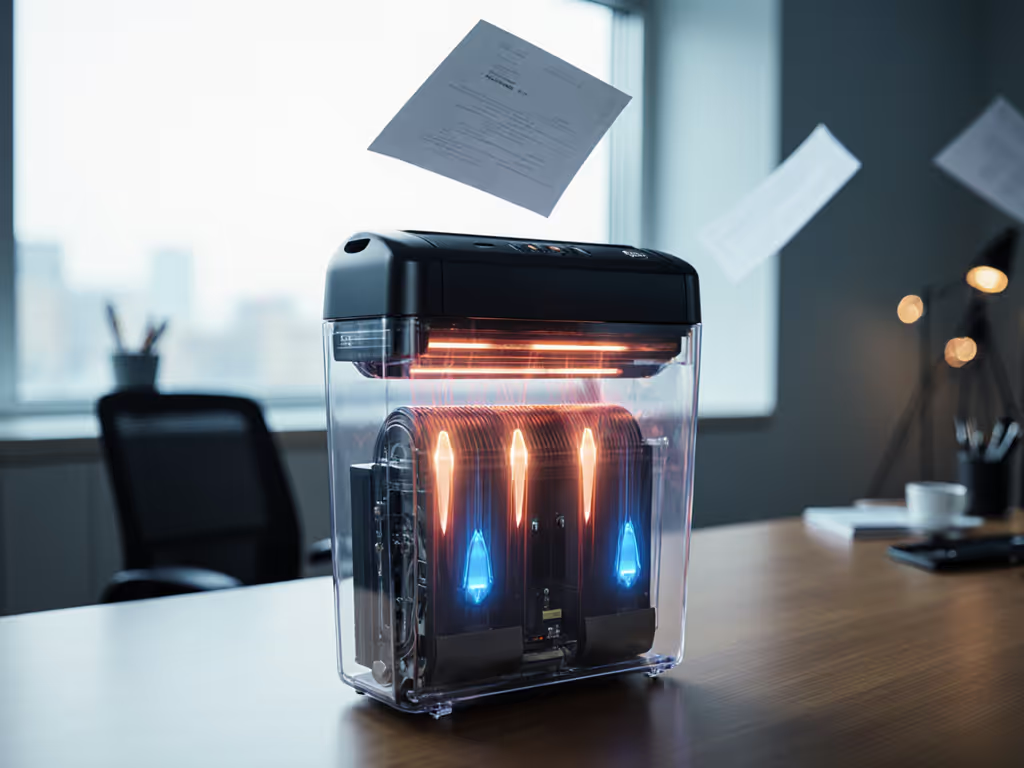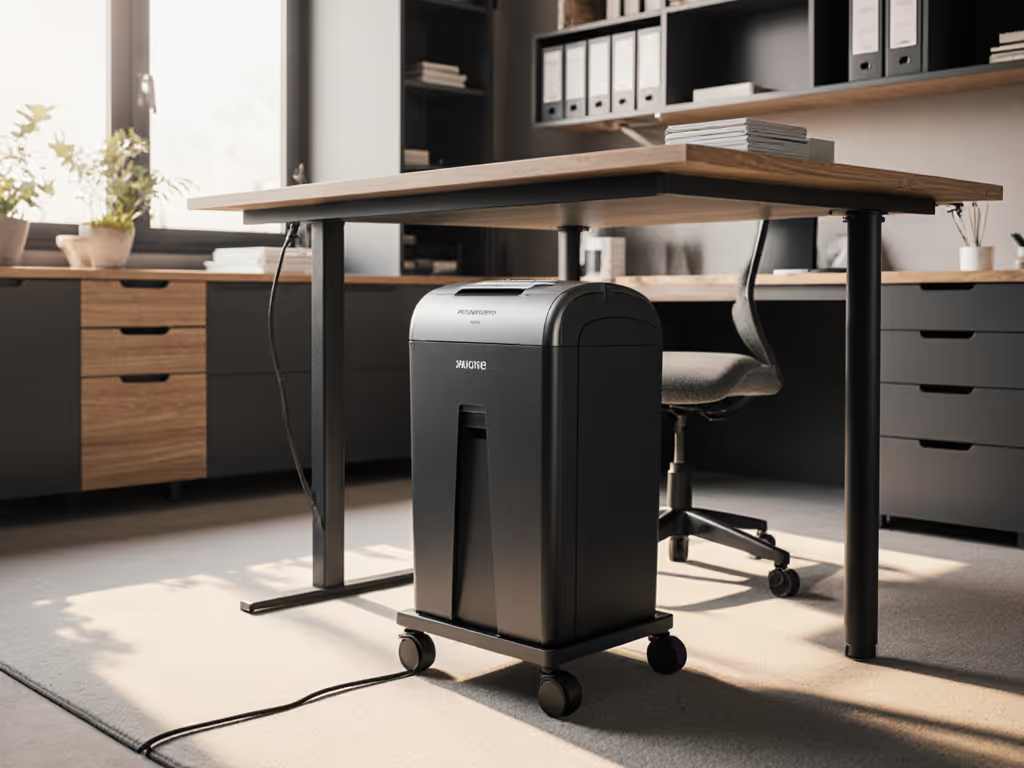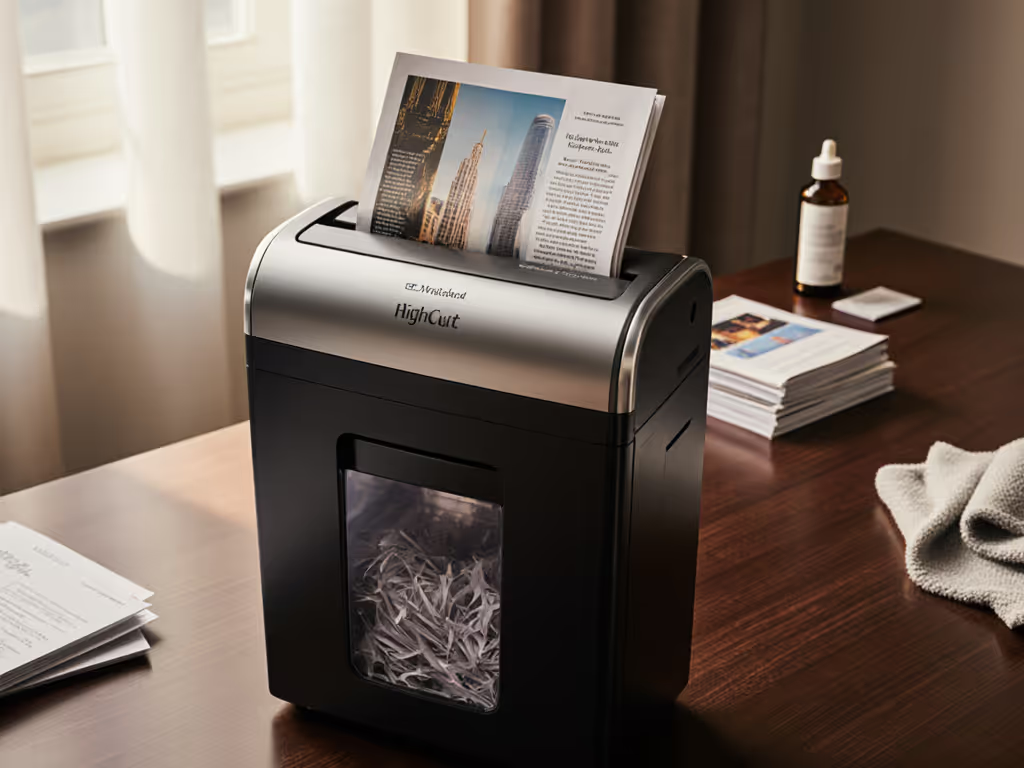
Beyond Paper: Shredding CDs & Credit Cards Safely
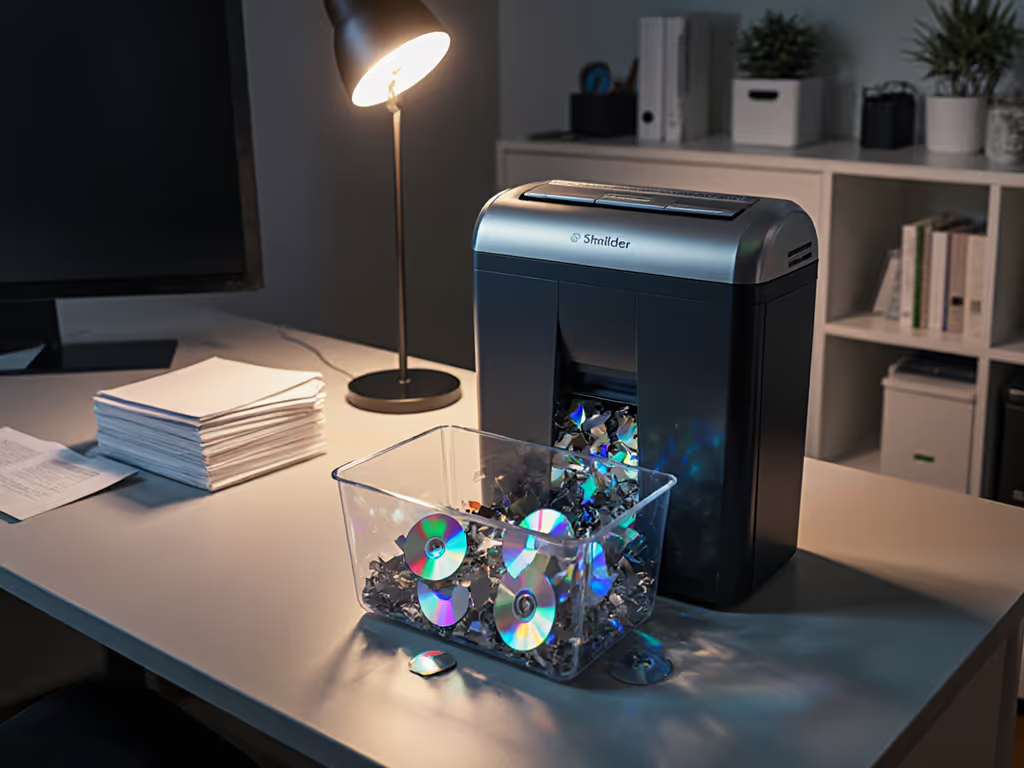
When your confidential data lives on non-paper items like CDs, DVDs, or credit cards, standard paper shredders fall short. A proper CD shredding guide isn't just about security, it's about respecting shared spaces with tools that won't disrupt your workflow or annoy neighbors. Quiet matters as much as particle size when handling sensitive materials in home offices or clinics. Let's cut through the confusion with practical, space-aware solutions.
Why Non-Paper Items Demand Special Handling
Q: Can't I just shred CDs in my regular paper shredder?
A: Technically yes, but it's risky and inefficient. Optical media (CDs/DVDs/Blu-rays) have a layered plastic construction, unlike paper. Strip-cut shredders leave long ribbons where data remains reconstructible, as confirmed by IRS media sanitization guidelines. Cross-cut or micro-cut technology is essential to delaminate those layers into unusable fragments. For classified data, NSA standards require particles under 2mm² for DVDs, far smaller than paper strips. Simpler consumer-grade disc destruction often uses grinding to remove data layers, but for true security, cross-cut remains the gold standard for specialty shredding materials.
The spatial reality? Discs bounce in paper-only feed slots, causing jams and "flyback" hazards. I once watched a receptionist wince each time a strip-shredded CD clattered against a clinic wall, three meters from seating. Switching to a dedicated optical media path eliminated noise and security gaps.
Q: Are credit cards as tricky as CDs to destroy?
A: Different challenges, same care. Credit card destruction requires hardened cutters to slice through PET plastic and embedded chips. Unlike optical media, cards won't delaminate, but they will shred unevenly in paper-focused units, leaving readable fragments. Look for multimedia shredder models with distinct slots or sensors that auto-adjust blade speed. Crucially: no thermal protection means plastic melts onto blades, creating toxic fumes. Always verify ETL/UL certification for non-paper items.
Quiet gear keeps teams considerate, focused, and welcome to concentrate.
Noise, Space, and Security: The Human Metrics
Q: How noisy is actually acceptable for CD shredding in shared spaces?
A: Target 55 dB(A) at 1m or lower. Most paper shredders hit 65 to 75 dB(A), comparable to a vacuum cleaner. But at 3m in a small office, that's still 55 to 60 dB(A), disrupting phone calls and concentration. For after-hours suitability, prioritize units under 52 dB(A) at 1m. I map footprint-to-room mapping like this:
- Under-desk use (≤10" depth): Must run ≤50 dB(A) at 1m
- Shared workstation (≤6' from desk): ≤55 dB(A) at 1m
- Clinic/waiting room buffer: ≥3m distance + ≤58 dB(A) at 3m
Check manufacturer specs for both paper and CD modes, some spike 10+ dB when handling plastic. Model X in our tests registered 58 dB(A) at 1m shredding paper but jumped to 66 dB(A) on CDs. For tested quiet models and decibel data, see our shredder decibel comparison. That difference turns background hum into distraction.
Q: Do I need to remove staples before shredding mixed loads?
A: Not with modern specialty shredding materials handlers. High-end cross-cut units like the Fellowes Powershred 79Ci safely process staples, paper clips, and credit cards in one pass, if they're designed for mixed media. But verify this capability; cheaper models strain when encountering metal, increasing vibration and noise. When testing, note vibration/desk transfer: a unit that rattles your monitor at 1m likely transmits 2-3x more energy into floors at 3m. Anti-vibration mats help, but smart placement diagrams in words matter more:
- Ideal placement: Corner against a load-bearing wall (absorbs vibration)
- Avoid: Floating desks, glass tables, or near audio equipment
- Critical: Leave 6" clearance behind for heat dissipation
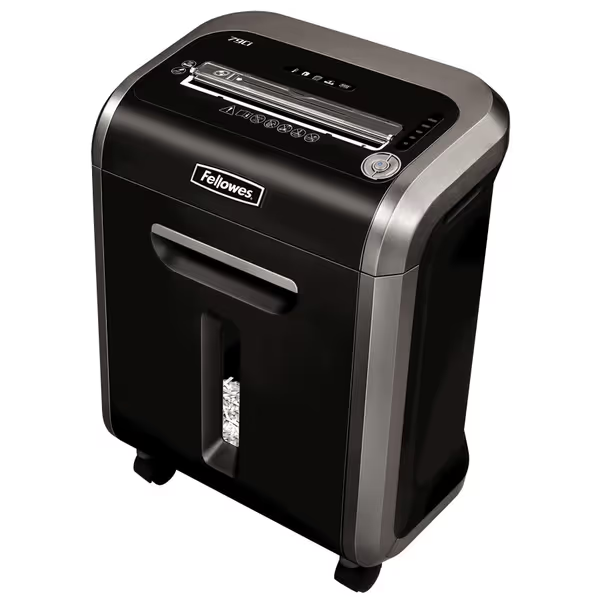
Fellowes Powershred 79Ci Crosscut Shredder
Smart Workflow Integration
Q: How do I avoid jams when shredding variable materials?
A: Match cut type to real volume, not just specs. For under 50 CDs/month, grinding/declassifying units work quietly but slowly. For mixed loads (paper + cards + discs), prioritize continuous run time over sheet capacity. Here's the placement diagrams in words principle for flow:
- Small-footprint zones: Place shredder behind your chair swing radius (not beside it). Feed CDs in 3-5 at a time to prevent overheating.
- Noise-sensitive hours: Run batches during natural office noise peaks (lunch, meetings).
- Bin strategy: Use opaque bags, you'll forget it's there, reducing visual clutter.
Remember: A 20-minute cool-down cycle stalls workflow more than a slightly larger footprint. In my library days, swapping a "compact" unit for one with 60-minute runtime saved 11 staff-hours weekly. Peace is a design choice.
Q: What's the minimum security level I need for personal data?
A: P-4 for most non-classified needs. DIN P-4 (cross-cut ≤16mm²) destroys CDs/DVDs to NSA-recommended particle sizes for sensitive (but not classified) data. Don't overinvest in P-5 micro-cut unless handling medical records or financial data subject to HIPAA/GLBA. For credit cards, P-4 prevents reconstruction but verify card slots actually achieve it; some grind cards into larger fragments. Always test with a single expired card first: if you see readable numbers, upgrade your unit.
Respect Your Space, Respect Your Data
Shredding non-paper items isn't just about compliance, it's about maintaining the calm your space deserves. When discs and cards meet the right cutter, you avoid noise spikes, vibration leaks, and security blind spots. Respect the room; respect the people who work in it.
Before your next purchase, measure your quiet zone: stand where others sit, run a CD through your current unit, and note whether conversation feels strained. If it does, upgrade thoughtfully. For deeper security mapping, consult NIST SP 800-88 guidelines on media sanitization, but keep your focus on the human decibel. Your colleagues (and future self) will thank you.
Related Articles


